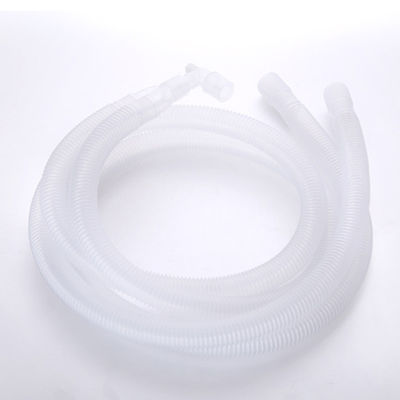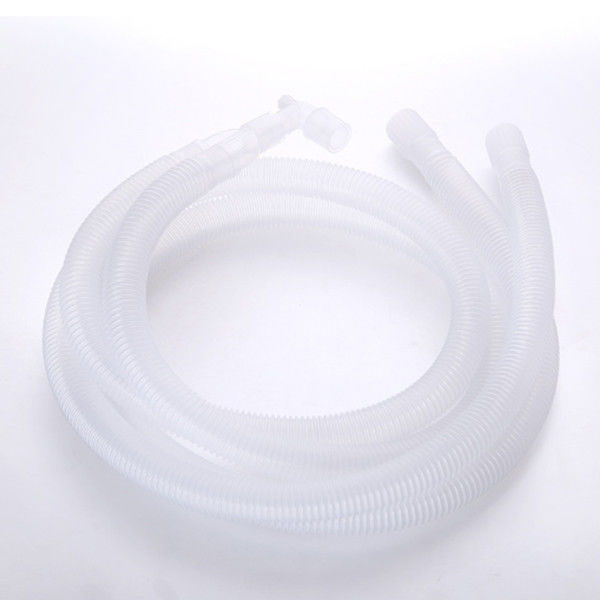
Disposable 1.8m Anesthesia Catheter Anesthesia Circuit Normal Respiratory
-
Highlight
Disposable Anesthesia Catheter
,1.8m anesthesia circuit
,1.8m Anesthesia Catheter
-
KeywordBreathing Circuit
-
PropertiesANESTHESIA & RESUSCITATOR
-
UsageHospital Medical
-
FeatureEco-friendly
-
TypeNormal
-
Instrument ClassificationClass II
-
Disinfecting TypeEOS
-
Quality CertificationCe
-
ColorGreen, White Transparent
-
ApplicationClinic
-
Place of OriginChina
-
Brand NameHenan Aile
-
CertificationCE
-
Model Number1.8m
-
Minimum Order Quantity5000pcs
-
PriceNegotiable
-
Packaging Detailsindividually wrapped or customized
-
Delivery Time15-30days
-
Payment TermsL/C, T/T
-
Supply Ability1500000 Piece/Pieces per Month
Disposable 1.8m Anesthesia Catheter Anesthesia Circuit Normal Respiratory
Disposable Anesthesia Circuit Normal
1. Disposable Anesthesia Catheter:
- The catheter is designed for the delivery of anesthesia gases or medications during medical procedures. Being disposable implies that the catheter is intended for single-use and should be discarded after each procedure. Disposable catheters contribute to infection control and reduce the risk of cross-contamination.
2. 1.8m Length:
- The catheter has a length of 1.8 meters. The specified length is suitable for use in anesthesia circuits, providing an appropriate size for the respiratory needs of patients.
3. Anesthesia Circuit:
- The anesthesia circuit refers to the system that includes various components such as tubes, connectors, and filters, and plays a crucial role in delivering and scavenging gases during anesthesia administration. The catheter is likely part of this circuit.
4. Normal Respiratory:
- The term "Normal Respiratory" indicates that the anesthesia catheter is designed for use in conditions of normal respiratory function. It may be used in routine anesthesia procedures where standard respiratory support is required.
5. Material:
- The catheter is likely made of materials suitable for medical use, ensuring flexibility, biocompatibility, and ease of disposal. The materials used are selected to meet safety and regulatory standards.
6. Versatility:
- The catheter is designed to be versatile, suitable for a range of patients and anesthesia procedures where normal respiratory conditions are expected.
7. Single-Use Design:
- As a disposable catheter, it eliminates the need for reprocessing or cleaning after use. This is particularly important in medical settings where infection control is a priority.
8. Quality and Safety Standards:
- The catheter is expected to comply with relevant quality and safety standards for medical devices, ensuring that it meets regulatory requirements and is safe for clinical use.
![]()
Features:
Disposable anesthesia breathing circuit match use with anesthesia machine or breathing machine, as a use of piping anesthetic gases, oxygen and other medical gases into patient. This products made by non-toxic and smell-less material PP and PE, with the characteristic of good elasticity, flexibility and pressure.
| Cat.NO. | Specification | Cat.NO. | Specification |
| SR13261201 | Adult 1.0m | SR13261202 | Adult 1.2m |
| SR13261203 | Adult 1.5m | SR13261204 | Adult 1.8m |
| SR13261205 | Pediatric 1.0m | SR13261206 | Pediatric 1.2m |
| SR13261207 | Pediatric 1.5m | SR13261208 | Pediatric 1.8m |
![]()
Are anesthesia circuits sterile?
Nowadays, most anaesthetic equipment is capable of being sterilised or is single-use and disposable. Some parts, such as the non-disposable ventilator bag, may be suitable for disinfection only.
Why are anesthesia circuits corrugated?
COMPONENTS OF A BREATHING SYSTEM
Large bore, usually corrugated tubes, made of rubber or plastic. Corrugations increase flexibility and resistance to kinking. Clear plastic tubes are lightweight and low resistance.
How should anaesthetic circuits be cleaned and stored?
Remove the anaesthetic circuit from the machine detaching it from the common gas outlet. Disassemble the circuit and gently clean tubes, connectors and rebreathing bags in mild detergent to remove organic matter such as blood and saliva. Rinse well.
What are anesthesia circuits?
A breathing system or breathing circuit is a medical device used to deliver oxygen, remove carbon dioxide, and deliver inhalational anaesthetic agents to a patient.


